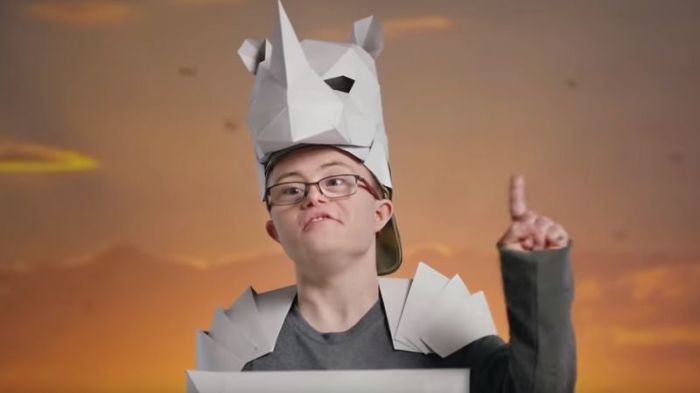Down syndrome children apply to be on international 'endangered species' list

Individuals with Down syndrome are applying to be on the international endangered species list in light of their communities particular vulnerabilities and declining population.
A video called "Endangered Syndrome" from the Canadian Down Syndrome Society, which was released on YouTube earlier this month and features several young men, women, and children explaining why they are applying to be the first group for human beings to be on the list along with vulnerable animals.
The children, who appear dressed up in costumes of animals who are endangered, say in the video that jobs for individuals with Down syndrome are scarce and that their community is shrinking.
"We have to fight for education," they explain.
"We need support like all these animals do. They make the world a more beautiful place. And so do we," the children continue, directing viewers to sign their petition at EndangeredSyndrome.com.
In light of the shrinking global population of persons with the condition — in countries where abortion is legal many of them are aborted as advanced medical testing allows early detection — the group states that their goals are to ensure their right to work and be self-sufficient, live independently with more housing facilities and decreased wait times, and provide more support and services to bolster more inclusion in their communities. CDS also seeks to remove barriers in education to guarantee better support for students with Down syndrome and raise awareness, challenging stigmas and misperceptions.
"The visual of children with Down syndrome dressed up as endangered species is an inconvenient image of abortion, probably because the parallel rings so true," Daily Signal journalist Kelsey Harkness noted Thursday.
"If we can so easily sympathize with endangered species, shouldn't we be able to empathize with endangered humans, too?"
More than 65 percent of people with Down syndrome are out of the workforce, according to the group's website, and animal welfare organizations have 90 percent more resources and funding than Down syndrome groups in North America.
In their application letter to the International Union for Conservation of Nature Global Species Programme, CDS argues people with the condition should be included on the "red list," that is, it meets the criteria to be considered endangered, because of significant population declines in several countries.
In Iceland, for example, almost all pregnancies where a Down syndrome test is performed via amniocentesis or through other methods and found positive, end in abortion. Only one to three babies with the condition have been born in the subarctic island nation each year from 2004-2013, the CDS letter notes.
Absolute Down syndrome births — the number babies born with the condition — have fallen so significantly across North America, Europe, and Asia, people with Down syndrome should thus be classified as "critically endangered," they maintain.
Down syndrome is caused by a genetic abnormality where a full or partial extra copy of chromosome 21 appears on the of the 23 pairs of chromosomes present in the nucleus — where genetic material is stored — of every cell.
Approximately 6,000 babies with Down syndrome are born in the United States every year, the National Down Syndrome Society notes on its website. According to the Centers for Disease Control and Prevention, around one in every 700 babies in the United States is born with Down syndrome, making it the most common chromosomal condition.





























